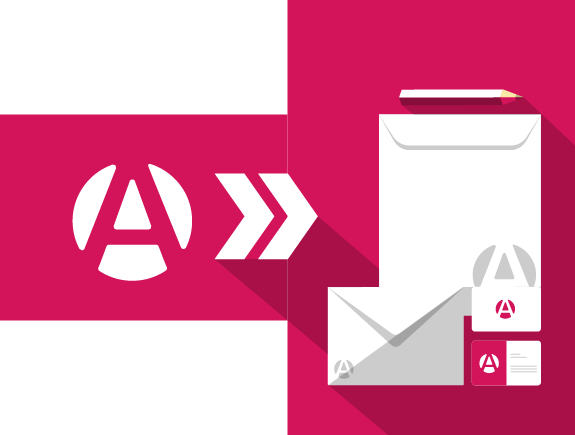Why is important the successful logo design presentation? Have ever wondered is there a way to distinguish high-end works of professional graphic designers and beginners interested in design, with a bit of talent but not enough experience to showcase his/her work in a proper way? The goal of this blog post is to provide more than one answer to the question “How can you differentiate between professionals and beginners”?. Logo design presentations include not only the look of the logo but the overall story related to the general concept. Hence, we have decided to share a few best examples from our practice, compiled thanks to many years of our experience.
Before we scratch beneath the surface, we’d like to remind you of our blog posts published earlier. They perfectly fit the topic of logo presentations, and could be very useful for owners of small businesses or the ones just starting. In both cases, it is recommendable to understand The importance of a logo for small businesses, but also The most important characteristics and elements of a good logo. There are more valuable texts on our Blog page related to logo design. We will mention them later as well.
From our point of view, logo design and logo creation are products of our creativity, invested time, and efforts. Logo design presentation is a crucial segment of the whole process since it assumes presenting our design solution to clients. In content marketing, content is the king, while in logo design presentation, context is the king, which additionally clarifies and puts our design solution in the perspective our clients can digest.
Presentation makes that first strong impression
Clients have high expectations when it comes to the final product of the logo creation process. Due to the fact, the clients are business owners, not art directors, they are not familiar with the format of the final presentation, so it is up to designers to impress them. Our designers don’t send just usual files with logo design, their presentation also includes a creative vision supporting the final design solution.
Designers starters, sometimes send 10 logo versions to the client followed by a brief explanation, because they lack experience, were in a hurry, or simply don’t understand the purpose of the presentation. Due to their lack of experience, they hope they’re sending the files to someone experienced enough to understand, and they are not concerned with providing all details regarding each visual solution. They are also not aware of the fact the more solutions you provide the more confused the clients will be. It would be a great addition for the clients if they get explanations regarding the logo formats (and how to use them).
In this way, the clients understand the general logo creation process involves their own opinion as well, and the final selection of the logo version they prefer the most. The client cannot be treated as part of the team, it is our duty to offer the narrow selection of the best options. Then the client can make the final choice. It is up to the designer to lead the creative process and vision, this cannot be left up to the client.
Based on our experience, if we present three logo versions, which is considered to be the optimal number of options, it decreases the number of revisions to 2-3, which is significantly less than what is expected if you send about ten options.
Professional logo design presentations are the best solution for showcasing the final ideas
We already pointed out sending ten logo files by email is not a professional approach in client communication and relationship. Criteria for well-shaped logo design presentation:
- Presenting more versions without confusing the client,
- Clarifying all dilemmas the client may have regarding the design and concept,
- Defining a clear mission, vision, and goal for each of three design versions,
- Presenting ideas in a client-friendly way, so the client can easily go through all options (it is essential to create one slide with all three options together, so the client can compare them).
Now, let’s check all the rules for creating a successful presentation.
Rule #1 – The client should be informed of the overall process
People tend to think the logo design process is simple and fast and takes not more than 5 minutes. To prevent this attitude, we would recommend reading our blog posts on this topic Creative process in steps part 1 and From brief to logo part 2.
The logo creation process includes research, experimenting, and creative thinking. It is significant for the client to understand each phase, its duration, so the client can finally understand the value of the final product he gets and pays for. If the client wonders about the price for a logo creation service, we have a blog post as an answer to this question – What is the cost of a logo design?.
The logo design process can be split into the following phases:
- Presenting logo variations and explaining the criteria for making a narrow selection, explanation of the brainstorming process, and creative research,
- Presenting logo in different standard formats, like business cards, folders, billboards, flags, web, and social media, etc. this way, the client will see the presentation of the logo in different backgrounds, dimensions, how the logo fits various colors. All this with one purpose, so the client can realize how universal the design concept is.
- The client should understand the scientific approach of the logo design process. The designer should provide explanations regarding dimensions and proportions, a color palette, and cover all these topics with proper examples.
If we provide an insight into our creative process, the client will realize the process is transparent, and only then the client can conceive that each phase takes a certain time, and so the completion, too.
Rule #2 – Creation of the visual identity, apart from logo creation
Some clients perceive a logo as a simple image they literally have to put on their products. When we involve them more in the very process, they understand it is not a 5-minute job, and it is not just an image. Only then, they comprehend The real value of a logo and reasons to invest in it.
To enable further clarification of the concept and provide a wider context, the presentation should include:
- Values and inspiration – it is significant to point out the source of inspiration. Also, based on the designer’s opinion, the values presenting logo design and the overall visual identity should be established too,
- Fonts and color palettes – also enhance visual perception so the client can see the whole picture and not just the isolated logo design,
- Different formats and backgrounds – they give a wider perspective so the client can understand how his/her brand would look like with all the given elements, developed and then applied, for example on flags in front of the company. This way, the concept of visual identity becomes real, when something imaginary becomes doable.
Rule #3 – Telling a story
To enable a complete understanding of the concept and logo itself to the client, it is essential to create a wider context including everything that helps to tell a story about the brand, its goals, ideas, and values.
Hence, it is recommended to include the keywords, in the initial part of the presentation, the ones client provided to describe his/her product in the best possible manner. The keywords are needed to help designers in defining the direction of the creative process, as well as the impact the logo should produce on consumers. Some of these words could be: luxury, powerful, power, premium, bold, eco, eco-friendly, modern, abstract, ambitious, unexpected, inventive, simple … After you go through the keywords again, the client will be able to connect them with the upcoming first version of the logo.
In order to tell a story in a proper way, apart from the keywords, it is only logical proper colors are needed too since the presentation should be useful but appealing as well. Colors also tell a story and they are important for stimulating the overall look of the future visual identity. It is desirable to use corporate colors in the presentation so the focus stays on the most important part – the logo itself.
Vital parts of logo design presentation – a brief list of slides
As a summary, we will share concrete examples and a list of slides that should be included in the presentation, in the following order:
- Start from the very beginning; it assumes coming back to the starting point and the reason the client wanted to create the logo (whether it’s the design from scratch or redesign) or coming back to the goal of this new design (better market positioning, getting closer to the target audience, etc.),
- It is the right time for the logo presentation; white background and the logo, it is all that is needed, the rest will be explained during the presentation,
- Then the logo should be displayed on the white and black background, which should go as the next slide; this way the client can see how the logo looks like both on a light and dark background,
- Time for a wider perspective so the client can see how the logo looks like on business cards, etc.
- The next slide should present the logo in small formats,
- Logo presentation in large formats,
- At this stage, the logo version should be presented on a white background again,
- Repeat the above-mentioned points for the other two logo versions; twelve slides total,
- After presenting all three versions separately, the last slide should present all three logos together on a white background; this is an ideal chance to present all logos in one slide and to exclude at least one version.
If you need a logo design, Titan Design is there for you
We sincerely hope our text about logo presentations was useful and that you’ve managed to learn from it. If you think this post could be valuable to others, feel free to share it with your colleagues and friends.
In case you need a Logo dizajn, someone to build your visual identity, packaging design, or a web design, creative agency Titan Design will be happy to meet you and build the best design solution for you. Contact us and book the meeting with our team.





















